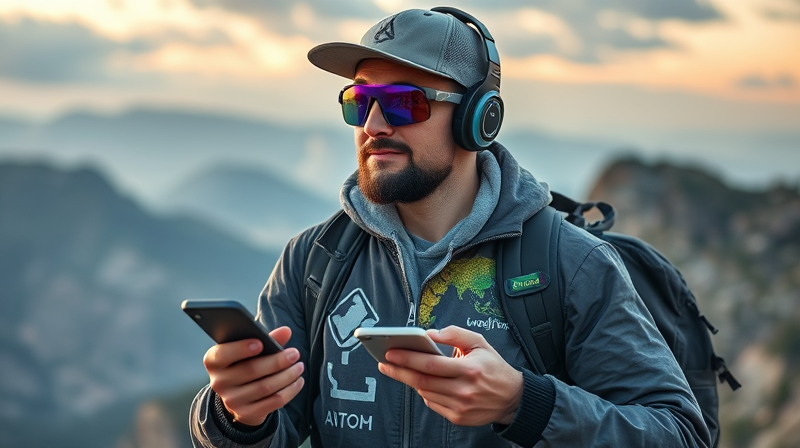In today’s rapidly evolving world, the art of balancing active exploration with deliberate downtime has become essential for achieving overall wellness and sustainable success. With technology racing forward and everyday life filled with constant challenges, learning how to intertwine moments of vigorous activity with periods of pure relaxation is a key strategy for thriving in both personal and professional realms.
Modern society celebrates innovation and discovery. Whether it is the latest breakthrough in artificial intelligence or a creative solution to long-standing challenges, the drive to explore new frontiers is deeply embedded in our culture. At the same time, experts across various fields emphasize that without the chance to recharge, our ability to fully harness curiosity and creativity diminishes.
Embracing the Power of Exploration
Innovative thinking often begins with exploration. In technology, for example, industries invest heavily in research and development, pushing the boundaries of what is possible. The quest for rapid advancements encourages teams to experiment, develop prototypes, and compete in an arena where speed is frequently equated with success. This relentless pursuit of novelty has led to many remarkable achievements.
But the rapid pace of modern development – as seen in evolving tech trends – can sometimes lead to burnout, not just within companies but also on an individual level. Explorations in both professional and personal arenas may inadvertently overshadow the need to rejuvenate perspective, resulting in creative blocks or mental exhaustion.
Moreover, families and communities today face schedules packed with commitments. From extracurricular activities for children to professional deadlines for adults, the calendar never seems to slow down. While the abundance of opportunities is a blessing, it also requires careful handling of energy and attention to preserve long-term engagement and mental health.
Understanding the Significance of Downtime
Intentional downtime is not a luxury, but a necessity. Recent research highlights that pauses in the day—when used wisely and free from distractions—can significantly enhance problem-solving abilities and fuel creativity. For children, unstructured playtime is critical for building resilience and learning to navigate the complexities of life.
Leading academic institutions, including Harvard, have underscored that play and rest form the bedrock of personal growth. In a world where every moment seems to be scheduled, protecting time for relaxation not only supports physical health but also improves mental agility and emotional stability.
This essential practice is not reserved for the young. When professionals within high-pressure environments incorporate methods like dynamic scheduling and mindful breaks, they often find that their productivity and overall satisfaction improve dramatically.
Practical Strategies for Achieving Balance
Developing a balanced routine requires thoughtful planning and flexibility. Here are some effective strategies that both individuals and organizations can utilize to integrate exploration with downtime:
- Dynamic Scheduling: Change your calendar to include alternating periods of intense activity and quiet reflection. Just as robust AI systems distribute workloads to avoid overload, your day should offer bursts of productivity followed by restorative breaks.
- Protecting Unstructured Time: Reserve slots in your schedule for unscripted, device-free time. This practice fosters creative thinking and reduces stress, promoting mental clarity.
- Reflective Decision-Making: Regularly assess your workload and commitments. By reflecting on your priorities, you ensure that you’re making purposeful choices rather than succumbing to the pressures of constant activity.
- Leveraging Support Systems: Just like sophisticated AI architectures that rely on backup systems, building a dependable support network—be it family, friends, or colleagues—can help alleviate the pressures of overcommitment.
Implementing these strategies involves a conscious choice to acknowledge that rest can be an active process of growth. In fact, downtime is often when the mind processes complex information, connecting different ideas that eventually lead to innovative breakthroughs.
Mindful rest can be transformative. It is during these periods that we often gain fresh insights and discover new approaches to challenges that once seemed insurmountable. Both extended and short breaks restore energy and renew focus, encouraging more effective engagement during periods of active exploration.
The Future is About Integration
Looking ahead, the interplay between exploration and downtime is set to become even more significant. As we navigate the evolving landscapes of technology and daily life, the need to seamlessly integrate these two aspects will be a defining characteristic of success. With technological innovations accelerating and the variety of life opportunities expanding, accepting that time for reflection is as crucial as time for action will empower us all.
Top experts, including those in fields where downtime strategies are embedded in system designs, agree that establishing a balance is an investment in long-term success. Whether you are part of a corporate team pushing the limits of artificial intelligence or a parent striving to nurture a growing child's curiosity, remember that both exploration and rest are vital.
Strive to create a harmonious balance within your life by ensuring that both work and relaxation are given their deserved places. As you explore new ideas or technologies, take the extra step to enjoy moments of calm. This balanced approach not only protects your physical and mental health but also enhances your ability to innovate, think critically, and ultimately succeed.
By embracing the art of balancing exploration with downtime, you empower yourself to reach higher levels of creativity and effectiveness. The journey to a more fulfilling life starts by recognizing the inherent value of both dynamic activity and restorative quietness.







